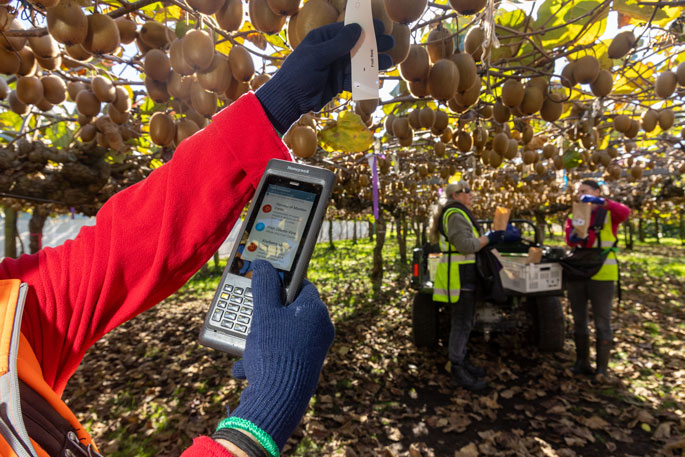Zespri’s RubyRed kiwifruit sprung on the market seemingly from out of nowhere in 2022, but on the outskirts of Te Puke, scientists were quietly celebrating decades of work coming to fruition.
Kiwifruit breeding began in 1977, with the Kiwifruit Breeding Centre formally established as a joint venture between Zespri and Plant & Food Research in 2021.
“Part of our challenge is that the innovation cycle is long and so it can take us 20 years to develop a concept,” says chief commercial officer Dr Bart Challis.
“One of the unique things about the New Zealand sector is the relationship between Zespri and the breeding programme.”
He explains that globally a lot of breeding programmes aren’t either strategically linked or vertically integrated.
“It means that a lot of the kiwifruit breeding that happens outside KBC isn’t deliberate or targeted.”
Driving factors
“We get fantastic market research and insights from Zespri. Our programme is focused on the outcomes desired by Zespri which is driven by their consumer research, their global footprint, their analysis of the global fruit bowl, where the opportunities for category growth are and where the opportunities for new products in the fruitbowl are.”
Those factors drive the Kiwifruit Breeding Centre’s entire programme.
“The challenge for us is that often Zespri might define the market opportunities in a specific way,” says Bart. “That might be that the fruit needs to have a certain ‘mouth feel’. It needs to feel more luxurious on the palette, like chocolate, for example.”
It’s then up to researchers to work out the underlying characteristics that a fruit needs to deliver that consumer trait.
“It might be a lower astringency, it might be a particular carbohydrate or something else.”
It’s at this point KBC’s relationship with Plant & Food Research becomes incredibly important.
“We have to then work out scientifically not only how we measure that, but how we measure that at scale,” says Bart. “Our population is tens of thousands of individuals [kiwifruit seedlings] every year so if you’re trying to deliver a particular concept you need to be able to screen all of those individuals in a cost-effective, high throughput manner to ensure you’re identifying the ones within the population that have the traits you’re looking for.”
Improving fruit
At the same time, researchers are working to improve the fruit for the growers in physical and technical ways that will improve yield, vigour, budding and how the fruit stores and transports.
“The attribute that we always focus on is the supply chain; where does this product overlap with our others in the market, when does this hit the packhouses, the picking crews or the consumer because in the marketplace, we don’t want everything coalescing at the same time,” says Bart.
 Kiwifruit Breeding Centre chief commercial officer, Dr Bart Challis. Photo: Debbie Griffiths.
Kiwifruit Breeding Centre chief commercial officer, Dr Bart Challis. Photo: Debbie Griffiths.
Seasonality and timing are important but so is the fruit’s performance in transit.
“You can’t test how well they travel by shipping thousands of fruit from individuals around the world so you have to come up with technical solutions that give you an understanding of how they may perform in a ‘pseudo’ supply chain,” says Bart.
“There’s a heap of science that goes on and it’s validated over many years to be able to screen our populations to understand how they’ll perform in that setting.”
Room to grow
Zespri RubyRed may have seen its third season this year, but it remains a work in progress.
“We come back to the market insights,” says Bart.
“There might be additive attributes that Zespri feels will enhance a product’s position in the market or create new opportunities so that might be additional health benefits or other characteristics. We’re constantly working on that. There’ll be concepts that will be looking to expand that entry point into new market spaces and have improved performance in the supply chain or on the orchard.”
 Te Puke’s Kiwifruit Breeding Centre. Photo: Jamie Troughton/Dscribe Media.
Te Puke’s Kiwifruit Breeding Centre. Photo: Jamie Troughton/Dscribe Media.
Bart says because of commercial sensitivity around what KBC does, it’s difficult to talk about it but growers should be reassured there’s a lot of work going on to continue improving.
“It’s a part of the industry that’s not talked about but not talking about it doesn’t mean it’s not happening. There’s a really good model and a great commitment from the shareholders to deliver future value that I think is industry leading.”




0 comments
Leave a Comment
You must be logged in to make a comment.